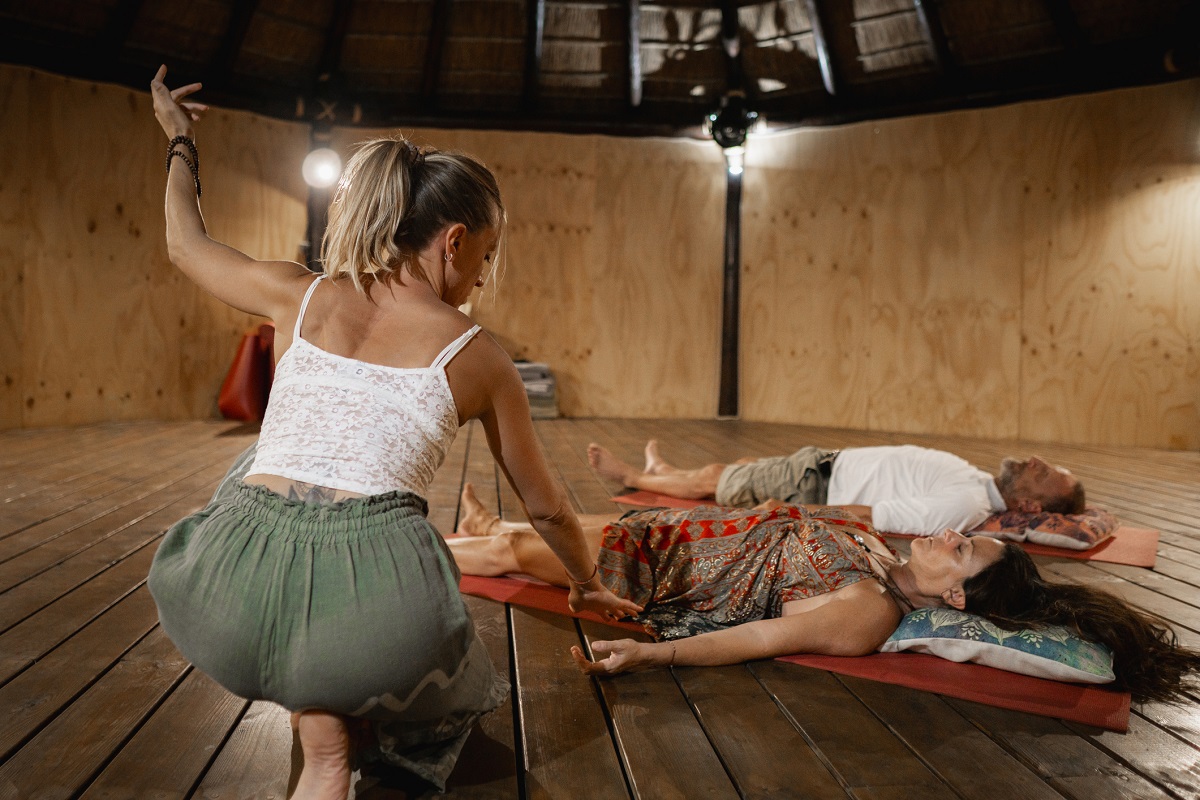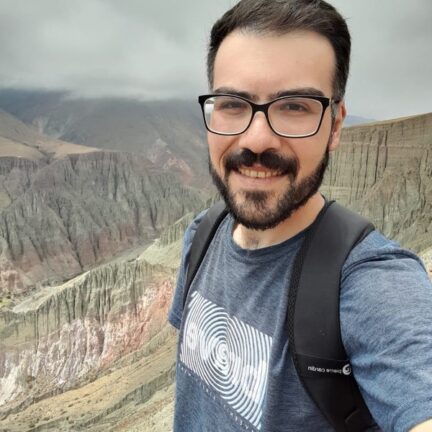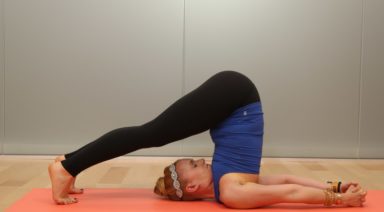What Is Kundalini Awakening and What Are Its Symptoms?

Kundalini is a spiritual energy that lies dormant at the base of the spine, waiting to be activated. Its awakening can induce a series of symptoms that affect the body, mind, and spirit, providing a comprehensive transformational experience. In this article, we explore how kundalini awakening manifests and the signs that indicate its activation.
Table of Contents
- What Is Kundalini Energy?
- What Does It Mean to Awaken the Kundalini?
- 10 Symptoms of Kundalini Awakening
- Sensations of Energy in the Spine
- Changes in Sleep Patterns
- Increased Emotional Sensitivity
- Physical Pains and Tensions
- Heightened Intuition and Spiritual Perception
- Renewed Sense of Purpose and Destiny
- Changes in Sexuality
- Feelings of Joy and Unconditional Love
- Perception of Inner Lights and Colors
- Episodes of Mental Clarity and Spiritual Vision
- What Are the Dangers of Awakening the Kundalini?
- How to Safely Activate the Kundalini
What Is Kundalini Energy?
Kundalini energy is a spiritual force located at the base of the spine, often represented as a coiled serpent. In the traditions of yoga and tantra, this energy is seen as the essence of divine consciousness, connecting the physical body with the spiritual universe. This latent energy is vital for overall well-being and, when it flows properly, can harmonize the body and mind, promoting health and inner balance.
In its dormant state, kundalini remains in the sacral region, waiting to be awakened to unleash its transformative potential. When it is activated, it can open energy channels that enhance physical, emotional, and mental health, providing a deep sense of well-being.
What Does It Mean to Awaken the Kundalini?
Awakening the kundalini involves the activation of this latent energy and its ascent through the main chakras of the body. This process can be induced through spiritual practices such as yoga, meditation, conscious breathing, and tantra. The goal is to release the energy flow and reach higher states of consciousness, self-understanding, and spiritual connection.
The experience of kundalini awakening can be both positive and challenging. On the positive side, it brings mental clarity, creativity, intuition, and a deep sense of peace and purpose. However, it can also be disruptive, bringing intense physical and emotional symptoms that require careful management and understanding to integrate this energy healthily into daily life.
In the series Yogic Paths, available on Gaia, one episode delves into the traditions of Kundalini and Kriya Yoga, systems designed to activate and redistribute energy within the body. The concept of kundalini is explored, along with the syncretic practice of twentieth-century Kundalini Yoga, which combines kriya, yogic movement, dynamic breathing, Sikh practices, and chanting to elevate consciousness.

10 Symptoms of Kundalini Awakening
Kundalini awakening can manifest through a variety of physical, emotional, and spiritual symptoms. These symptoms are indicative of the flow of energy that is activated and ascends along the spine, impacting different aspects of the individual’s life.
Sensations of Energy in the Spine
One of the most common symptoms of kundalini awakening is the sensation of energy moving along the spine. This may feel like tingling, heat, or vibration rising from the base of the spine to the crown of the head, often described as the movement of a serpent.
Changes in Sleep Patterns
During kundalini awakening, it is common to experience alterations in sleep patterns. This may include insomnia, frequent awakenings during the night, or a need to sleep more than usual. These changes are a response from the body to the increase in energy and internal transformation.
Increased Emotional Sensitivity
Kundalini awakening can intensify emotions, making people feel more sensitive and vulnerable. Repressed emotions may rise to the surface, requiring attention and proper processing. This heightened sensitivity can also lead to a deeper empathy with others.
Physical Pains and Tensions
The rise of kundalini energy can cause aches and tensions in different parts of the body. These pains are usually temporary and are associated with the release of energetic blockages. The most common areas of discomfort include the back, neck, and shoulders.
Heightened Intuition and Spiritual Perception
As kundalini awakens, many people experience an increase in their intuition and spiritual perception. They may have visions, vivid dreams, or a heightened sense of connection with the universe. This increase in spiritual perception helps guide the individual on their path of self-discovery and spiritual growth.
Renewed Sense of Purpose and Destiny
Kundalini awakening often brings a renewed sense of purpose and destiny. People may feel a sudden clarity about their mission in life and a strong drive toward fulfilling their deepest goals. This sense of purpose can inspire significant changes in career, relationships, and lifestyle, aligning them more closely with their true desires and values.
Changes in Sexuality
Kundalini activation can also lead to changes in sexuality. These may include an increase in libido, new ways of experiencing pleasure, and a deeper connection with one’s partner. Sexual energy may feel more sacred and spiritually linked, leading to greater integration of body and spirit in the sexual experience.
Feelings of Joy and Unconditional Love
During kundalini awakening, many people experience deep feelings of joy and unconditional love. This expansive love is not only directed toward loved ones, but also toward humanity in general and nature. This experience of universal love can transform one’s life perspective, promoting greater compassion and connection with others.
Perception of Inner Lights and Colors
It is common for people going through kundalini awakening to perceive inner lights and colors during meditation or even in everyday life. These visions are often accompanied by a sense of peace and well-being, and may indicate the flow of energy through the chakras and the opening of internal spiritual channels.
Episodes of Mental Clarity and Spiritual Vision
Kundalini awakening can lead to episodes of mental clarity and spiritual vision, where one attains a deeper understanding of life and the universe. These moments may include profound insights, solutions to personal problems, and a stronger connection with intuition. The mind becomes more open and receptive to new ideas and experiences, facilitating personal and spiritual growth.

What Are the Dangers of Awakening the Kundalini?
Awakening the kundalini can be a powerful and transformative experience, but it also carries certain dangers if not handled properly. Kundalini energy is intense and can cause physical, emotional, and mental imbalances if not activated and channeled correctly.
- Energy overload: A flow of energy that is too intense can cause overwhelming sensations and physical discomfort. It is important to proceed with caution and under the guidance of an experienced instructor.
- Emotional instability: The abrupt release of repressed emotions can cause anxiety, fear, and other intense emotional states. Emotional support during this process is crucial.
- Mental disorientation: Uncontrolled activation of the kundalini can lead to confusion, loss of focus, and episodes of disconnection from reality. Maintaining balance and a safe practice is essential.
- Sleep problems: Changes in sleep patterns can result in insomnia or extreme fatigue. It is important to pay attention to the body’s needs and allow for sufficient rest.
- Social isolation: Intense and personal experiences may lead to isolation or difficulty relating to others. Maintaining healthy social connections is essential for emotional balance.
How to Safely Activate the Kundalini
Safely activating the kundalini requires patience, preparation, and the guidance of an experienced instructor. It is essential to adopt a gradual and conscious approach to avoid the possible dangers associated with this practice.
First, begin with gentle yoga and meditation practices that prepare the body and mind for the energy flow. Conscious breathing and yoga postures help open and balance the chakras, facilitating a gradual and safe kundalini awakening.
Additionally, maintaining a healthy lifestyle that includes a balanced diet, regular exercise, and adequate rest is important. These habits strengthen the body and mind, better preparing them to handle the increase in energy. Avoiding toxic substances and staying well hydrated also contribute to a safe practice.
Finally, seek the guidance of a master or spiritual guide with experience in kundalini activation. A qualified instructor can provide specific techniques, emotional support, and personalized guidance, ensuring the process is as safe and beneficial as possible.
What to Do if You Are Experiencing a Spontaneous Kundalini Awakening
Experiencing a spontaneous kundalini awakening can be an intense and sometimes bewildering experience. It is essential to manage this energy with care and awareness in order to integrate it in a healthy way into your life.
To begin with, it is essential to focus on self-care. Practice relaxation techniques such as meditation, gentle yoga, and conscious breathing. These practices will help you stay calm and balance the energy in your body, facilitating a smoother and more manageable awakening process.
Additionally, seeking the support of a spiritual community can be very helpful. Joining meditation groups, yoga classes, or spiritual circles will allow you to share your experiences and receive guidance from people who understand what you are going through. The experience and advice of others can offer you valuable perspective and recommended practices for managing your kundalini awakening.
Finally, consider keeping a journal to record your experiences, sensations, and emotions throughout the awakening process. Writing can be a powerful way to reflect and better understand what you are going through, as well as help you identify patterns and progress along your spiritual path. This record can also be useful to share with other practitioners or spiritual guides if you choose to seek additional guidance.
What Is Kundalini Yoga?

There aren’t many things that retain their full potency when they are blended together. Ok, maybe Pert shampoo and conditioner. Maybe Simon and Garfunkel. Maybe cronuts, but that’s about it. In yoga, Kundalini is the exception.
Kundalini yoga is a blend of Bhakti yoga (the yogic practice of devotion and chanting), Raja yoga (the practice of mediation/mental and physical control) and Shakti yoga, (for the expression of power and energy).
A well-taught Kundalini yoga class leaves you feeling like you’ve gone to therapy, had an awesome workout in the gym, made it to your yoga mat and enjoyed a fun singing session with friends. The purpose of Kundalini yoga is to provide a modality by which people can achieve their maximum creative potential, free themselves from Karma (the lasting effects of past actions) and realize their life purpose. Experiencing a Kundalini awakening is like being given the secret code to always winning a blue ribbon, along with a get-out-of-jail-free card, at which point you gleefully fire your life coach because now you know more than he does.
Is That a Snake in Your Spine or Are You Just Glad to See Me?
To understand how Kundalini works you first have to understand that you have a snake in your spine. The Sanskrit word kundal means “circular,” and it can be a noun for a coiled snake. The feminine kundalī means a ring, bracelet, or coil of rope. This concept was adopted as kundalinī into Hatha yoga in the 15th century and, by the 16th century, was used in the Yoga Upanishads.
So the term Kundalini means “a spiritual energy or life force located at the base of the spine,” which is usually conceptualized as a coiled-up serpent.
The practice of Kundalini yoga is supposed to arouse the sleeping Kundalini Shakti from its coiled base through the six chakras that reside along the spine, and through the seventh chakra, or crown. Chakras are wheels, or hubs of energy, along which energy or prana, travels like a superhighway to distribute energy throughout the body.
Like a snake being charmed out of a basket by a bansuri, Kundalini weaves and coils, waking up energy and clearing stagnancy along the way. Without the fangs.
These days Kundalini yoga is a synthesis of many traditions, and the kriyas and meditations in Kundalini Yoga are designed to raise complete body awareness to prepare the body, nervous system, and mind to handle the energy of Kundalini rising. Many of the physical postures are designed to activate the navel, spine, and focal points of pressurization on meridians (energy points). Through breath work (pranayama) and the application of yogic locks of energy (bandhas), the release, direction, and control of the flow of Kundalini energy is achieved.
The technique of alternate nostril breathing (left nostril, right nostril) which is described as a simple breathing technique, is one of these often-utilized techniques. When you’re dealing with a stuffed up nose, there’s nothing simple about breathing out of one nostril. Especially the one plugged up. I’ve found the simplicity comes through first attempting, then practicing. This type of breathwork is taught as a way to cleanse the nadis, or subtle channels and pathways, to help awaken Kundalini energy. Probably the last thing you want to do when you’re congested, but can be quite helpful!





































